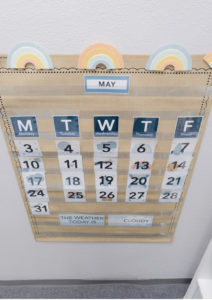
Have you heard of a visual schedule? It is a graphic representation that can help support children in learning how to follow a routine, transition between activities, develop new skills, and support independence in completing daily activities.
A visual schedule can be represented in a number of ways: photographs, line drawing, symbols, or text. Tasks are represented in the order in which they are to be completed.
Use for Visual Schedules:
- Can teach a new skill by breaking it down into simpler steps
- Improve functional living skills (i.e., dressing, toothbrushing, etc.)
- Increase on-task behavior
- Supports children in structure and predictability by knowing what comes next
- Can help children understand abstract concepts like time and organization
Tips for Establishing a Successful Schedule:
- Identify the skill or routine you would like to target.
- Break the skill into shorter, simpler steps.
- Personalize the schedule. The more your child can relate to the visual cues, the more successful your child will be with following the schedule.
- You can use photographs of your child completing specific tasks to support their understanding.
- Teach your child to follow the schedule by using verbal or physical guidance (cues), especially when the schedule is new.
We have created a morning and night routine for your use at home!
You can print and laminate these PDFs and display them in a central location in your home. Laminating the image allows it to become a dry erase board and your child can physically check off tasks as they are completed!
We have also created a blank visual schedule that you can use to support your unique routines/schedules at home. We recommend cutting out each pictured icon and laminating it for repeated use. You can organize your routines into morning, afternoon, and night time routines with specific activities in the order that best works for you and your family. Once your child has completed each activity, he/she can move the activity from the “To Do” side of the schedule to the “Done” side of the schedule to support him/her in knowing what has been completed and what activity will be next.
Common Activities for Visual Schedules
Should you have any questions, please reach out to us!
Email: FLadmin@riseservicesinc.org
Phone: (407) 904-1600
